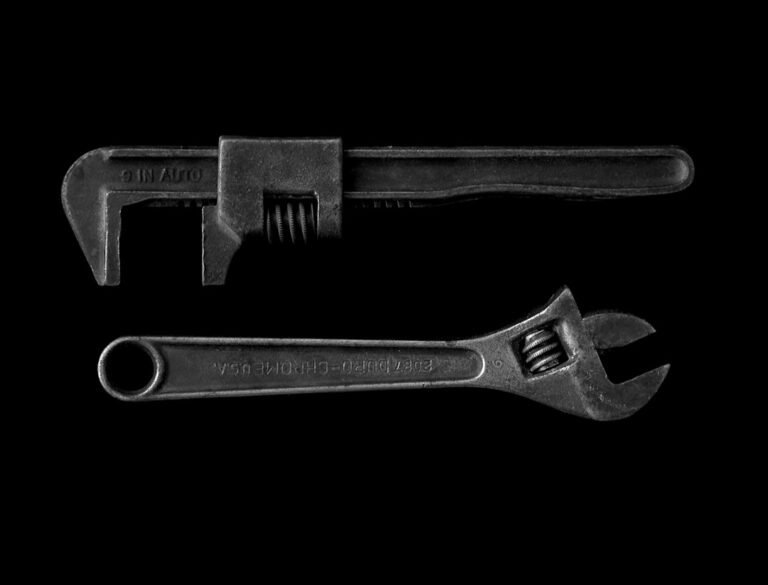Planning and organization are essential components of successful project management. Various digital tools have been developed to facilitate these processes. Trello is a popular platform that utilizes boards, lists, and cards to organize tasks and projects, enabling effective team collaboration and progress tracking.
Asana is another widely used tool that offers features such as task assignments, due dates, and project timelines, providing a visual representation of project status and individual task progress. Wrike and Monday.com are additional options for planning and organization. Wrike incorporates Gantt charts, time tracking, and workload management functionalities, offering a comprehensive solution for project planning.
Monday.com provides customizable workflows, task dependencies, and timeline views, allowing teams to tailor their organizational approach to specific project needs. These digital tools are valuable resources for project managers and teams seeking to enhance their planning and organizational capabilities. By leveraging these platforms, teams can improve communication, streamline workflows, and increase overall project efficiency.
Key Takeaways
- Planning and Organization Tools are essential for keeping track of tasks, deadlines, and resources.
- Communication and Collaboration Tools help teams stay connected and work together effectively, regardless of location.
- Project Management Software is crucial for overseeing the entire project lifecycle, from planning to execution and monitoring.
- Task and Time Management Tools assist in prioritizing tasks and managing time efficiently to meet project deadlines.
- Budget and Financial Management Tools are necessary for tracking project expenses and ensuring financial accountability.
- Data Analysis and Reporting Tools help in making informed decisions by analyzing project data and generating reports.
- Quality Assurance and Testing Tools are important for ensuring that the project meets quality standards and performs as expected.
Communication and Collaboration Tools
Centralized Communication Platforms
One popular tool is Slack, which offers real-time messaging, file sharing, and integrations with other productivity tools. Slack provides a centralized platform for team communication, making it easier for team members to stay connected and informed.
Collaboration and Video Conferencing Tools
Another valuable tool for communication and collaboration is Microsoft Teams, which offers chat, video conferencing, and file sharing capabilities. With Microsoft Teams, teams can easily collaborate on projects and communicate in real time, regardless of their location.
Essential Tools for Remote Teams
In addition to Slack and Microsoft Teams, tools like Zoom and Google Workspace are also essential for communication and collaboration. Zoom offers video conferencing, webinars, and virtual meeting rooms, making it a valuable tool for remote teams. Google Workspace provides a suite of productivity tools, including Gmail, Google Drive, and Google Docs, to facilitate seamless collaboration and communication. These tools are essential for any project team looking to improve their communication and collaboration processes.
Project Management Software

Project management software is essential for planning, organizing, and executing projects effectively. One popular tool in this category is Jira, which offers features such as issue tracking, agile project management, and customizable workflows. Jira is particularly valuable for software development teams, as it provides a comprehensive platform for managing tasks and tracking progress.
Another essential project management tool is Basecamp, which offers features such as to-do lists, file sharing, and message boards. Basecamp provides a centralized platform for project communication and collaboration, making it easier for teams to stay organized and on track. In addition to Jira and Basecamp, tools like Assembla and Teamwork are also valuable for project management.
Assembla offers features such as code repositories, ticketing systems, and agile planning tools, making it a comprehensive solution for software development teams. Teamwork provides features such as task lists, time tracking, and project milestones to help teams manage their projects effectively. These project management tools are essential for any team looking to improve their project planning and execution processes.
Task and Time Management Tools
| Tool | Features | Price | Platforms |
|---|---|---|---|
| Todoist | Task organization, due dates, priority levels | Free, Premium plans available | Web, iOS, Android |
| Trello | Boards, lists, cards, collaboration | Free, Business plans available | Web, iOS, Android |
| Asana | Task assignments, deadlines, project tracking | Free, Premium plans available | Web, iOS, Android |
Task and time management are crucial aspects of project execution, and there are several tools available to help teams stay organized and on track. One popular tool in this category is Todoist, which offers features such as task lists, due dates, and priority levels. Todoist provides a simple yet effective way for individuals and teams to manage their tasks and stay organized.
Another valuable tool for task and time management is Toggl Track, which offers time tracking, reporting, and project dashboards. Toggl Track helps teams track their time effectively and gain insights into their productivity levels. In addition to Todoist and Toggl Track, tools like TickTick and RescueTime are also essential for task and time management.
TickTick offers features such as task lists, reminders, and habit tracking to help individuals stay organized and focused on their goals. RescueTime provides time tracking, website blocking, and productivity reports to help individuals manage their time effectively and avoid distractions. These task and time management tools are essential for any individual or team looking to improve their productivity and time management skills.
Budget and Financial Management Tools
Managing budgets and finances is a critical aspect of project management, and there are several tools available to help teams track expenses and stay within budget. One popular tool in this category is QuickBooks, which offers features such as invoicing, expense tracking, and financial reporting. QuickBooks provides a comprehensive platform for managing finances and gaining insights into the financial health of a project or business.
Another valuable tool for budget and financial management is FreshBooks, which offers features such as time tracking, project budgets, and expense management. FreshBooks helps teams stay on top of their finances and ensure that they are staying within budget. In addition to QuickBooks and FreshBooks, tools like Xero and Wave are also essential for budget and financial management.
Xero offers features such as bank reconciliation, payroll management, and financial reporting to help businesses manage their finances effectively. Wave provides features such as invoicing, receipt scanning, and accounting reports to help small businesses track their expenses and manage their finances. These budget and financial management tools are essential for any project team looking to improve their financial planning and management processes.
Data Analysis and Reporting Tools

Data analysis and reporting are essential for gaining insights into project performance and making informed decisions, and there are several tools available to facilitate these processes. One popular tool in this category is Tableau, which offers features such as data visualization, dashboards, and interactive reports. Tableau provides a powerful platform for analyzing data and creating compelling visualizations to communicate insights effectively.
Another valuable tool for data analysis and reporting is Microsoft Power BI, which offers features such as data modeling, AI-powered insights, and interactive reports. Microsoft Power BI helps teams gain insights into their data and make data-driven decisions. In addition to Tableau and Microsoft Power BI, tools like Google Data Studio and QlikView are also essential for data analysis and reporting.
Google Data Studio offers features such as data visualization templates, interactive dashboards, and data connectors to help teams create informative reports from their data. QlikView provides features such as data discovery, interactive dashboards, and data storytelling capabilities to help teams analyze their data effectively. These data analysis and reporting tools are essential for any project team looking to gain insights into their performance and make informed decisions based on data.
Quality Assurance and Testing Tools
Quality assurance and testing are crucial aspects of project delivery, particularly in software development projects, and there are several tools available to help teams ensure the quality of their deliverables. One popular tool in this category is Selenium, which offers features such as automated testing, cross-browser testing, and test case management. Selenium provides a comprehensive platform for automating web application testing across different browsers and platforms.
Another valuable tool for quality assurance and testing is JUnit, which offers features such as unit testing frameworks, test runners, and assertion libraries. JUnit helps software development teams ensure the quality of their code through automated unit testing. In addition to Selenium and JUnit, tools like TestRail and Katalon Studio are also essential for quality assurance and testing.
TestRail offers features such as test case management, test runs & results tracking, and integrations with other testing tools to help teams manage their testing efforts effectively. Katalon Studio provides features such as automated testing, test case management, and integrations with popular CI/CD tools to help teams automate their testing efforts across different platforms. These quality assurance and testing tools are essential for any software development team looking to ensure the quality of their deliverables through effective testing processes.
In conclusion, planning and organization tools like Trello, Asana, Wrike, and Monday.com are essential for streamlining project planning processes. Communication and collaboration tools like Slack, Microsoft Teams, Zoom, and Google Workspace are crucial for facilitating effective team communication. Project management software like Jira, Basecamp Assembla, Teamwork are essential for managing tasks effectively.
Task and time management tools like Todoist Toggl Track TickTick RescueTime are crucial for staying organized and productive. Budgeting financial management tools like QuickBooks FreshBooks Xero Wave are essential for managing project finances effectively. Data analysis reporting tools like Tableau Microsoft Power BI Google Data Studio QlikView are crucial for gaining insights into project performance making informed decisions based on data.
Quality assurance testing tools like Selenium JUnit TestRail Katalon Studio are essential for ensuring the quality of project deliverables through effective testing processes.
If you’re interested in learning more about the impact of technology on the music industry, check out this article about Olivia Rodrigo’s captivating Grammy Awards performance. It delves into how artists are using tools and technology to create innovative and visually stunning live shows.
FAQs
What are tools background?
Tools background refers to the history, development, and evolution of various tools used in different industries and fields.
Why is tools background important?
Understanding the background of tools helps in comprehending their functionality, purpose, and significance in various applications. It also provides insights into the technological advancements and innovations in tool design and manufacturing.
What are some examples of tools with interesting backgrounds?
Some examples of tools with interesting backgrounds include the hammer, screwdriver, wrench, saw, and drill. Each of these tools has a unique history and has evolved over time to meet the changing needs of users.
How has technology impacted the background of tools?
Advancements in technology have significantly impacted the background of tools by introducing new materials, manufacturing processes, and design techniques. This has led to the development of more efficient, durable, and precise tools.
Where can I learn more about the background of specific tools?
You can learn more about the background of specific tools by researching historical documents, industry publications, and online resources. Additionally, museums and exhibitions often showcase the evolution of tools and their significance in various fields.




















+ There are no comments
Add yours